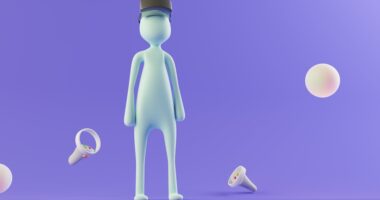Non-fungible tokens (NFTs) have taken the digital world by storm, revolutionizing the way we buy, sell, and trade digital assets. As the popularity of NFTs continues to grow, the need for intuitive and user-friendly interfaces becomes increasingly important. This is where NFT UX/UI design comes into play. NFT UX/UI design focuses on creating seamless and engaging experiences for users interacting with NFT platforms and marketplaces. It involves understanding the unique needs and behaviors of NFT enthusiasts and designing interfaces that cater to those needs. NFT UX/UI designers play a crucial role in shaping the way users interact with NFTs, from browsing and purchasing to managing their digital collections. In this article, we will explore the role of an NFT UX/UI designer, the intricacies of designing interfaces for NFT platforms, and the future of NFT UX/UI design.
Key Takeaways
- NFT UX/UI design is crucial for creating user-friendly and visually appealing interfaces for NFT platforms and marketplaces.
- Understanding the NFT ecosystem is essential for NFT UX/UI designers to create designs that cater to the specific needs and behaviors of NFT users.
- The role of an NFT UX/UI designer involves creating intuitive and seamless experiences for users interacting with NFTs, from browsing to purchasing and managing their digital assets.
- Designing user interfaces for NFT platforms requires a deep understanding of blockchain technology, digital asset management, and user behavior within the NFT space.
- Creating user experiences for NFT marketplaces involves designing interfaces that prioritize ease of use, security, and trust for users engaging in NFT transactions.
Understanding the NFT Ecosystem
Before delving into the specifics of NFT UX/UI design, it’s important to have a solid understanding of the NFT ecosystem. NFTs are digital assets that are unique and indivisible, making them ideal for representing ownership of digital art, collectibles, virtual real estate, and more. These tokens are typically built on blockchain technology, which ensures their scarcity and authenticity. NFTs are bought and sold on online marketplaces, where users can browse through a wide variety of digital assets and make purchases using cryptocurrency. The NFT ecosystem is constantly evolving, with new platforms and marketplaces emerging to cater to the growing demand for digital collectibles. As such, NFT UX/UI designers must stay abreast of the latest trends and developments in the NFT space to create interfaces that resonate with users and provide a seamless experience.
Role of an NFT UX/UI Designer
The role of an NFT UX/UI designer is multifaceted, requiring a deep understanding of both user experience principles and the intricacies of the NFT ecosystem. NFT UX/UI designers are responsible for creating interfaces that are not only visually appealing but also intuitive and easy to navigate. They must consider the unique needs and behaviors of NFT enthusiasts, ensuring that the design facilitates seamless interactions with digital assets. Additionally, NFT UX/UI designers collaborate closely with developers and product managers to bring their designs to life, iterating on their work based on user feedback and market trends. As the NFT space continues to evolve, NFT UX/UI designers must be adaptable and open to learning about new technologies and design trends to stay ahead of the curve.
Designing User Interfaces for NFT Platforms
Designing user interfaces for NFT platforms requires a deep understanding of the unique needs and behaviors of NFT enthusiasts. NFT platforms typically feature a wide variety of digital assets, from digital art and collectibles to virtual real estate and domain names. As such, NFT UX/UI designers must create interfaces that allow users to easily browse through these assets, view detailed information about each item, and make purchases using cryptocurrency. This involves designing intuitive search and filtering functionalities, as well as clear and concise information architecture to help users make informed decisions about their purchases. Additionally, NFT UX/UI designers must consider the security implications of handling cryptocurrency transactions, ensuring that the interface provides a secure and trustworthy environment for users to buy and sell digital assets.
In addition to browsing and purchasing digital assets, NFT platforms often include features for managing and showcasing a user’s digital collection. This may involve designing interfaces for creating custom galleries or virtual showrooms where users can display their digital art or collectibles. NFT UX/UI designers must consider how users will interact with these features, ensuring that the interface provides a seamless experience for showcasing and managing their digital collections. Overall, designing user interfaces for NFT platforms requires a deep understanding of the unique needs of NFT enthusiasts and a keen eye for creating intuitive and engaging experiences.
Creating User Experiences for NFT Marketplaces
NFT marketplaces are online platforms where users can buy, sell, and trade digital assets using cryptocurrency. Creating user experiences for NFT marketplaces involves designing interfaces that facilitate seamless transactions and provide a trustworthy environment for users to engage in buying and selling digital assets. This includes designing intuitive search and discovery functionalities that allow users to easily browse through a wide variety of digital assets and find items that match their interests. Additionally, NFT UX/UI designers must consider how users will interact with individual item pages, ensuring that the interface provides detailed information about each asset while also facilitating easy transactions.
Furthermore, creating user experiences for NFT marketplaces involves designing interfaces for managing a user’s transactions and digital collections. This may include features for tracking purchases, managing digital wallets, and showcasing digital assets in a user’s profile. NFT UX/UI designers must consider how users will interact with these features, ensuring that the interface provides a seamless experience for managing their transactions and digital collections. Overall, creating user experiences for NFT marketplaces requires a deep understanding of the unique needs of NFT enthusiasts and a keen eye for creating intuitive and engaging experiences.
Collaborating with Developers and Product Managers

Collaboration is key in the world of NFT UX/UI design, as it involves working closely with developers and product managers to bring designs to life. NFT UX/UI designers must collaborate with developers to ensure that their designs are technically feasible and can be implemented effectively within the constraints of the platform or marketplace. This may involve iterating on designs based on technical limitations or finding creative solutions to bring their vision to life. Additionally, collaboration with product managers is crucial for aligning design decisions with business goals and user needs. Product managers provide valuable insights into market trends and user behavior, helping NFT UX/UI designers create interfaces that resonate with users and drive engagement.
Furthermore, collaboration with developers and product managers involves gathering feedback from users and iterating on designs based on real-world usage. This iterative process allows NFT UX/UI designers to refine their designs based on user feedback and market trends, ensuring that the interface provides a seamless experience for users interacting with digital assets. Overall, collaboration with developers and product managers is essential for creating successful NFT UX/UI designs that resonate with users and drive engagement.
Future of NFT UX/UI Design
The future of NFT UX/UI design is filled with exciting possibilities as the NFT ecosystem continues to evolve and expand. As the popularity of NFTs grows, so too does the demand for intuitive and engaging interfaces that cater to the unique needs of NFT enthusiasts. The future of NFT UX/UI design will likely involve leveraging emerging technologies such as augmented reality (AR) and virtual reality (VR) to create immersive experiences for showcasing digital art and collectibles. Additionally, as blockchain technology continues to mature, there may be opportunities to explore new ways of integrating blockchain into the user interface to provide greater transparency and security for users.
Furthermore, the future of NFT UX/UI design will likely involve continued collaboration with developers and product managers to create interfaces that align with business goals and user needs. This collaborative approach will be essential for staying ahead of the curve in a rapidly evolving industry. Overall, the future of NFT UX/UI design holds great promise for creating seamless and engaging experiences for users interacting with digital assets in the ever-expanding world of non-fungible tokens.
If you’re interested in learning more about the world of NFTs and the opportunities it presents, you might want to check out this insightful article on NFT-Jobs.com. It provides a comprehensive overview of the NFT industry and the various roles available, including the responsibilities and skills required for NFT UX/UI designers. This article is a valuable resource for anyone looking to delve deeper into the NFT space and understand the potential career paths within it.
FAQs
What is an NFT UX/UI Designer?
An NFT UX/UI designer is a professional who specializes in creating user interfaces and experiences for non-fungible token (NFT) platforms and marketplaces.
What does an NFT UX/UI Designer do?
An NFT UX/UI designer is responsible for designing the visual and interactive elements of NFT platforms, including user interfaces, user experiences, and overall design aesthetics.
What skills are required for an NFT UX/UI Designer?
Skills required for an NFT UX/UI designer include proficiency in graphic design, user interface design, user experience design, knowledge of NFT technology, and an understanding of blockchain and cryptocurrency.
What tools do NFT UX/UI Designers use?
NFT UX/UI designers use a variety of design tools such as Adobe Creative Suite, Figma, Sketch, and other prototyping and wireframing tools to create and iterate on designs for NFT platforms.
What is the importance of NFT UX/UI Design?
NFT UX/UI design is important for creating intuitive and visually appealing experiences for users interacting with NFT platforms, which can ultimately impact user adoption and engagement.





